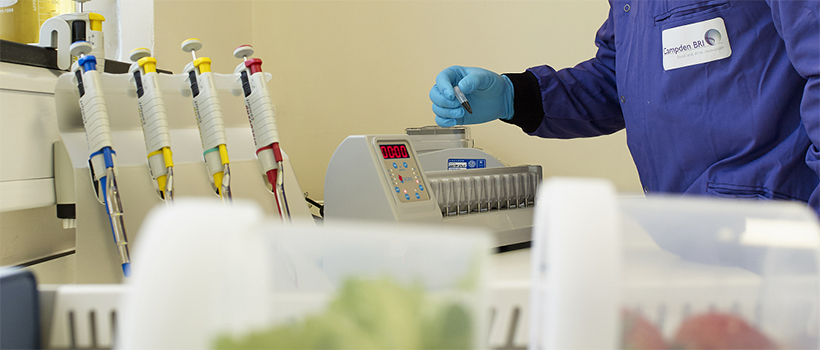
Viral Message: Norovirus causes greatest burden in UK pathogen ranking
12 January 2022 | Roy Betts, Scientific Affairs Directorate
Norovirus poses the highest burden on society out of 13 pathogens analysed in the United Kingdom.
The recently published (November 2021) UK Food Standards Agency (FSA) report ranked the foodborne pathogens in order of their detrimental effect on UK society.
Thirteen major foodborne pathogens were included:
- Bacteria Campylobacter, Clostridium perfringens, E. coli O157, Listeria monocytogenes, Salmonella and Shigella
- Parasites Cryptosporidium and Giardia
- Five viruses including Norovirus
The report concluded by ranking the pathogens as high, medium, or low, in order of their significance.
| High |
|---|
| Norovirus, Salmonella, C. perfringens, Campylobacter, L. monocytogenes |
| Medium |
|---|
| E. coli O157, Adenovirus, Sapovirus and Giardia |
| Low |
|---|
| Astrovirus, Rotavirus, Cryptosporidium, Shigella |
It also shows that yearly infection rates and economic cost from norovirus are the highest amongst the 13 foodborne pathogens. However, with most people surviving norovirus infection, how does norovirus end up costing the UK over £1.6 billion per year? The answer is productivity losses. Currently no vaccine or treatment is available, so what can a business do to combat norovirus?
What do we currently know about foodborne viruses?
Norovirus is highly transmissible via the faecal-oral route and is associated with outbreaks across a wide variety of foods such as leafy greens, fresh fruits and vegetables, and shellfish. While control measures for viruses are required to prevent the transmission of pathogens throughout the food chain, the industry is faced with two issues:
- Much still needs to be understood with regards to the effectiveness of these controls and validation of their performance
- Testing for viruses in food is not common and is also not easy. It involves extracting the virus from foods, followed by detection using a technique known as Real Time-PCR (RT-PCR)
How does this impact the assessment of Norovirus as a food risk?
The RT-PCR results can show the presence of Norovirus genomic material; however, it doesn’t mean that the food contains infective virus particles, but rather that the food has been contaminated at some stage during production.

As noted, the test method is not straightforward, but Campden BRI are one of the few laboratories able to do testing of Norovirus under UKAS accreditation and can offer all of the expert advice required in interpreting test results.
Perhaps one step further than testing is to look at how Norovirus can be controlled during food manufacturing processes. Evidence has shown that large outbreaks of norovirus have occurred due to contaminated foods. The diversity of processing equipment and the vast range of food products currently produced worldwide can make it very challenging for businesses to control contamination.
An understanding of the effects of food processes on Norovirus would allow us to design manufacturing processes that will reduce or eliminate any Norovirus if they were present, enabling the production of safe foods with respect to the virus. Data in this area has been difficult to find. Unlike bacterial pathogens which we can culture and test with various antimicrobial controls to measure their effects, we cannot culture Norovirus in the laboratory. This means that we cannot test the effect of these controls directly on the virus.
To provide some good guiding information Campden BRI has been doing work over several years using surrogate viruses to measure potential effects of control measures.
How can we study viruses, like Norovirus, that cannot be cultured?
Typically, at Campden BRI, to validate that processes deliver safe food, we use a harmless surrogate microorganism that mimics norovirus. Surrogate viruses can be easily cultured and used to give an indication of how pathogens behave when they are subjected to control measures such as heat processes, pH, water activity, various other processes, and disinfecting systems, and provides an indication of what may work and what does not. This allows informed judgments to be made as to the efficacy of a process and the need for additional measures to control Norovirus risk. This is further backed up by a high degree of expert knowledge and information to aid the decision-making process.
Last thoughts
Overall, the FSA report clearly shows viruses are of major significance and we should be concerned about them in our foods. At Campden BRI we have the necessary expertise to help your business through the risk assessment process:
- to design well founded control measures
- to test directly for them where required
Contact us for further information on our work and services involving foodborne viruses.
How can we help you?
If you’d like to find out more about norovirus food contamination, contact our support team to find out how we can help.
Are you a Campden BRI member who attends the MIG meetings?
- If not, you’re missing out on a whole host of exclusive benefits such as learning from industry-leading experts and networking with peers to overcome your challenges.







